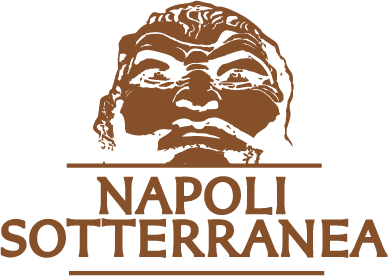Naples is a city that has attracted poets, artists and intellectuals since ancient times, becoming one of the world’s most fascinating cultural epicentres. Among the many authors linked to this city, two figures stand out for their historical and literary importance: the poet Virgil and the celebrated romantic Giacomo Leopardi. Both have left an indelible mark on the history of poetry, and today, thanks to the reopening of the Vergiliano Park in Piedigrotta, it is possible to visit the place that holds their tombs, in an environment that seems to stand still in time, a corner of history and nature.
Virgil and his connection with Naples
Publius Virgilius Maron, one of the greatest Latin poets, indissolubly linked his name to Campania, and to Naples in particular. Born in Andes, near Mantua, (in 70 BC), Virgil moved to the Campania region for reasons related to his health and career. In the city of Naples he found a refuge that became a source of inspiration for his poetic vein. His most famous works include the Aeneid, the Bucolics and the Georgics. Legend has it that Virgil spent the last years of his life near Naples, meditating and writing the Georgics, attracted by the natural beauty of Campania.
As evidence of his bond with the city, Virgil’s tomb can today be visited in the Parco Vergiliano in Piedigrotta, a place that preserves the memory of his presence and writings. Not only a historical landmark, but also a symbol of the connection between poetry and the Neapolitan landscape.
Giacomo Leopardi: Naples and the Romantic Heart
Moving on to less remote times, Naples was equally important for Giacomo Leopardi, one of the greatest poets of Italian Romanticism. Although Leopardi came from Recanati, in the Marche region, the Neapolitan city played a crucial role in his life. The poet lived in Naples for several years, from 1833 to 1837, a period during which he experienced both moments of great solitude and deep reflection. It was in this city that he produced several significant works, including ‘L’infinito’; ‘La Ginestra’; ‘A Silvia’; ‘Il sabato del villaggio’; ‘Canto notturno di un pastore errante dell’Asia’ and ‘Il tramonto della luna’. In Naples, Leopardi also worked on the ‘Operette Morali’ and continued writing the ‘Zibaldone di pensieri’. Moreover, also in Naples, the official and definitive edition of his ‘Canti’ was published – in 1835 – which also included the ‘Idylls’.
The beauty of Naples, with its sea, Vesuvius and warm climate, had a great impact on the poetic sphere of Leopardi, who often reflected on the contradictions of life and human existence. The poet, although in serious health and immersed in deep melancholy, found in Naples a place of confrontation. His stay in the city, therefore, represents a fundamental chapter in his biography and poetic production.
The Vergiliano Park in Piedigrotta
The Vergiliano Park in Piedigrotta, recently reopened and made accessible to the public again, is the resting place of both poets, Virgil and Leopardi. Located in one of the most emblematic areas of Naples, the park is surrounded by greenery and offers a spectacular view of the Gulf of Naples, with Vesuvius silently watching over the panorama. The area still preserves the funerary monuments of the two great poets, making it a pilgrimage destination for anyone with a passion for literature and history.
The Vergiliano Park is an example of how the city of Naples has managed to preserve the link between the past and the present. Open to the public free of charge, it is an oasis of tranquillity where visitors can take a walk through history, breathing in the air of a place that has seen centuries of change pass by, yet retains its charm intact.
A corner of history, culture and nature
Walking in the Vergiliano Park in Piedigrotta means immersing oneself in an atmosphere that combines culture, history and nature. Walking along the paths leading to the tombs of Virgil and Leopardi, one can almost hear the echo of the words of the two poets. The area, which extends into a hidden corner of Naples, offers not only a reflection on the greatness of the works of the two authors, but also a fascinating insight into how Naples – with its thousand-year history and breathtaking landscape – has always been an inspiring muse for poets of all ages.
In conclusion, the Vergiliano Park in Piedigrotta is much more than just a city park. It is a place where poetry and history intertwine, where two of Italy’s greatest poets rest in a corner of Naples that has inspired and continues to inspire generations of writers and readers. The reopening of the park is a unique opportunity to rediscover Naples’ connection with poetry, a journey through time that provides a better understanding of the role this city has played in European culture. A corner of tranquillity that invites one to reflect, read and walk among the shadows of the greats of the past.

